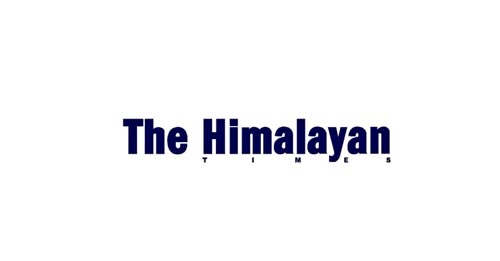EDITORIAL: Save the Chure
The extraction of sand and stones from the rivers is particularly disturbing in the wake of the heavy construction activities in Nepal and India
The Chure hills that rise just above the Tarai along the foothills of the Himalaya are the lifeline of the people of the southern plains. Spanning 33 districts east to west, the Chure, or Siwalik, is a rich repository of watersheds and other resources, namely forests and sand, stones and boulders. With 60 per cent of it still under forest cover and a rich biodiversity, it is the prime source of Nepal’s hardwoods, such as the sal. However, the Chure, being the youngest mountain of the world, is fragile and prone to severe erosion and landslides as it witnesses heavy rainfall during the monsoon. The vulnerability of this ecosystem is further aggravated by human encroachment, clearing of forests for cultivation, illegal logging for timber products, overgrazing and extraction of sand, stones and boulders from the rivers. This brazen exploitation of the Chure, which is the water reserve of the Tarai, poses a big threat to the country’s granary, putting the country’s economy and integrity at risk. Thus the government’s master plan for the conservation of the Chure region is both welcome and timely. The government is to allocate US$ 48 million, received from the Climate Change Fund, to address the problems facing the Chure region and issues of climate change in Madhes and the Tarai.
Actually, in view of the Chure’s social and ecological significance, the government had placed emphasis on its conservation starting in 1970. And in 2009, the Rastrapati Chure Conservation Programme was launched, a year after Dr Ram Baran Yadav became the first president of republican Nepal, to identify the problems, challenges and issues facing its conservation, and propose an effective plan of action. However, the exploitation of Chure’s resources – gravel, sand, timber and limestone – has only surged at an alarming rate. Due to the deforestation and environmental degradation, the Chure is losing sediment, which is carried downstream by the rivers. The excavation and extraction of sand and stones from the rivers are particularly disturbing in the wake of the heavy construction activities in Nepal and India. It is estimated that every year 6.5 million cubic metres of gravel, sand and stones are mined legally in the region while illegal mining of these resources is double the figure. Such haphazard mining for sand and gravel from the rivers has exposed settlements in the Tarai to flash floods, leading to loss of life and property.
The conservation of the Chure deserves utmost seriousness as it together with the Tarai is home to 60 per cent of the country’s population. There is little awareness among the local communities about the impact of haphazard exploitation of natural resources, hence little attention is paid to sustainable approaches. Thus the government’s plan to provide skill training and establish micro-enterprises to improve the livelihood of the people of the region to wean them off the natural resources is praiseworthy. The success of the master plan for the Chure will, however, hinge on how effectively the government can put an end to the political protection being provided at multiple levels to the unscrupulous businesses exploiting the natural resources.
Manage waste wisely
There are 293 municipalities in the country, of which six are metropolises and 11 sub-metropolises. But none of them have a proper waste management system. Although the government declared new municipalities based on certain criteria, such as population size and sources of income, it did not make it mandatory to have a provision of waste management. Most of them dump the waste from the urban centres either on the river banks or in the forests without having a recycling plant.
Triyuga Municipality is also one of the urban centres that lacks a proper waste management scheme. It has been dumping garbage on the banks of the Triyuga River for over two decades, causing pollution of the river water and surrounding settlements. Outbreaks of contagious diseases cannot be ruled out if proper attention is not paid to managing the waste collected from the city areas. If the waste products are well-managed, it will not only generate income opportunities at the local level, but also help keep the local environment clean. All the municipalities should introduce modern technology to better manage the waste products that can also be converted into a good source of energy.


